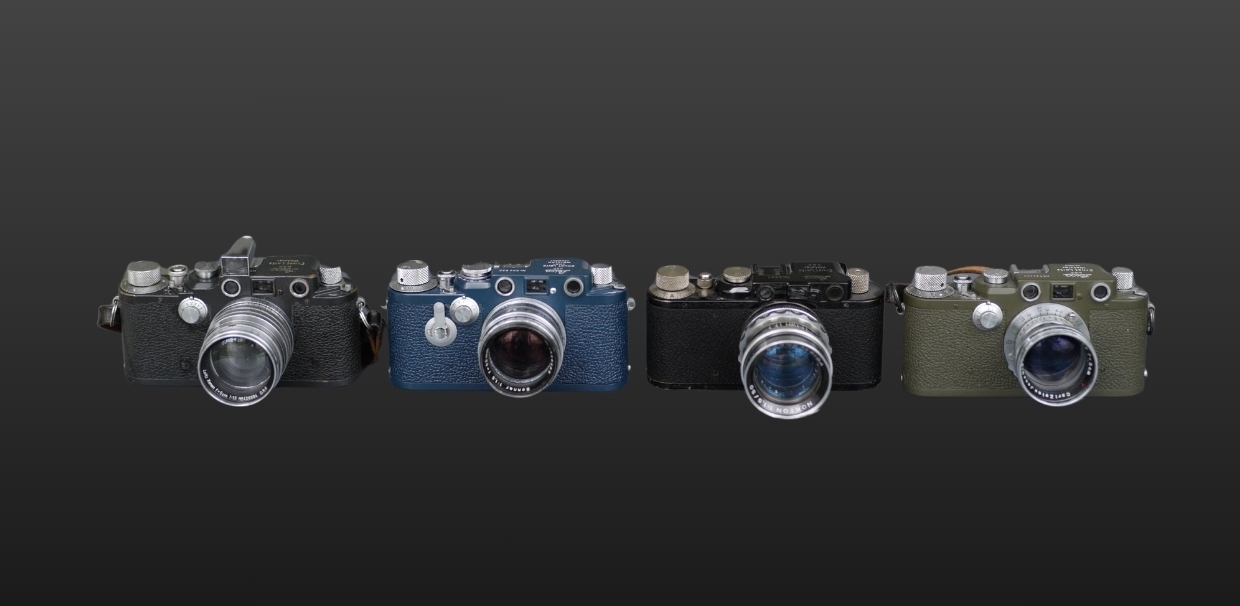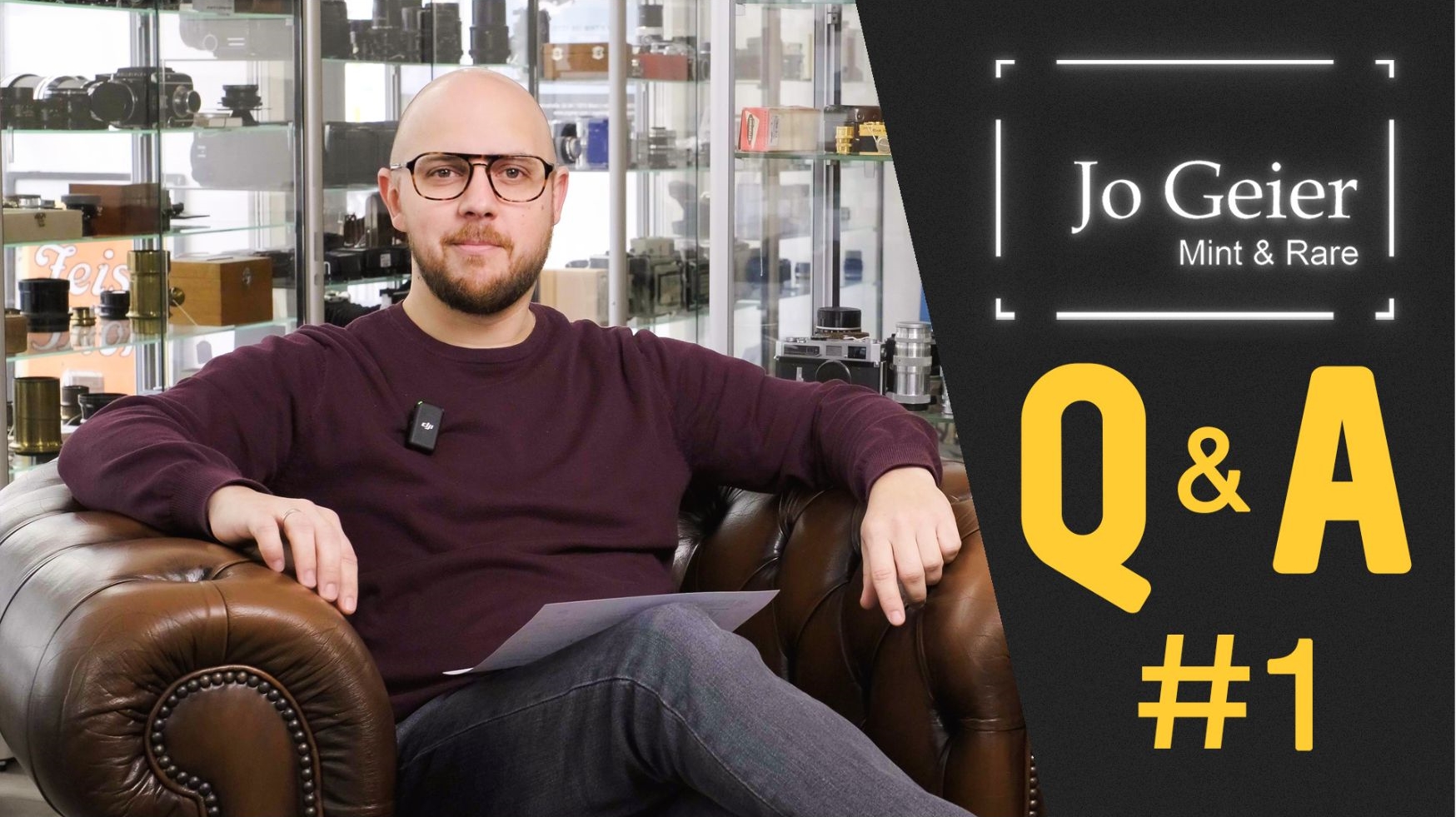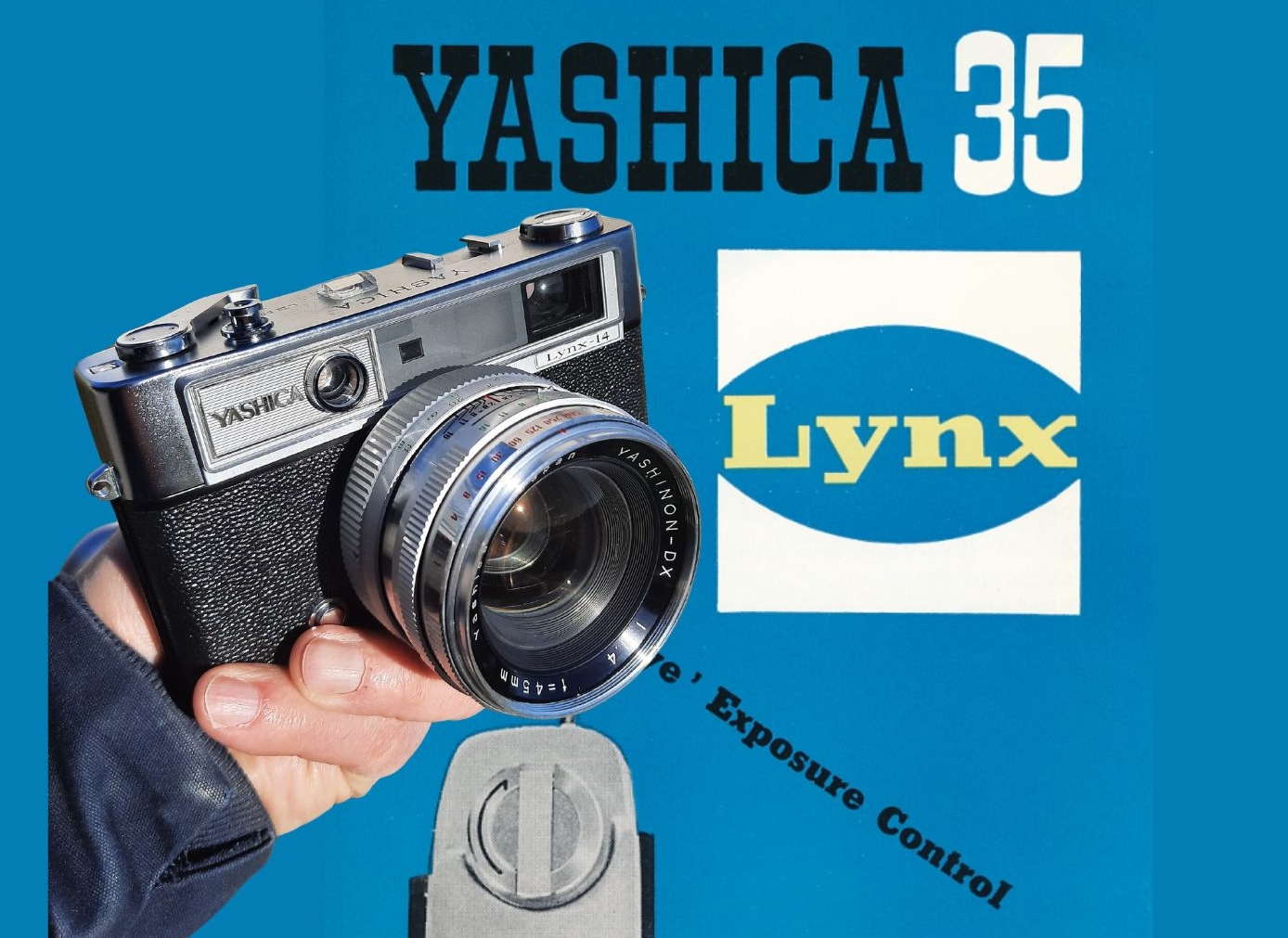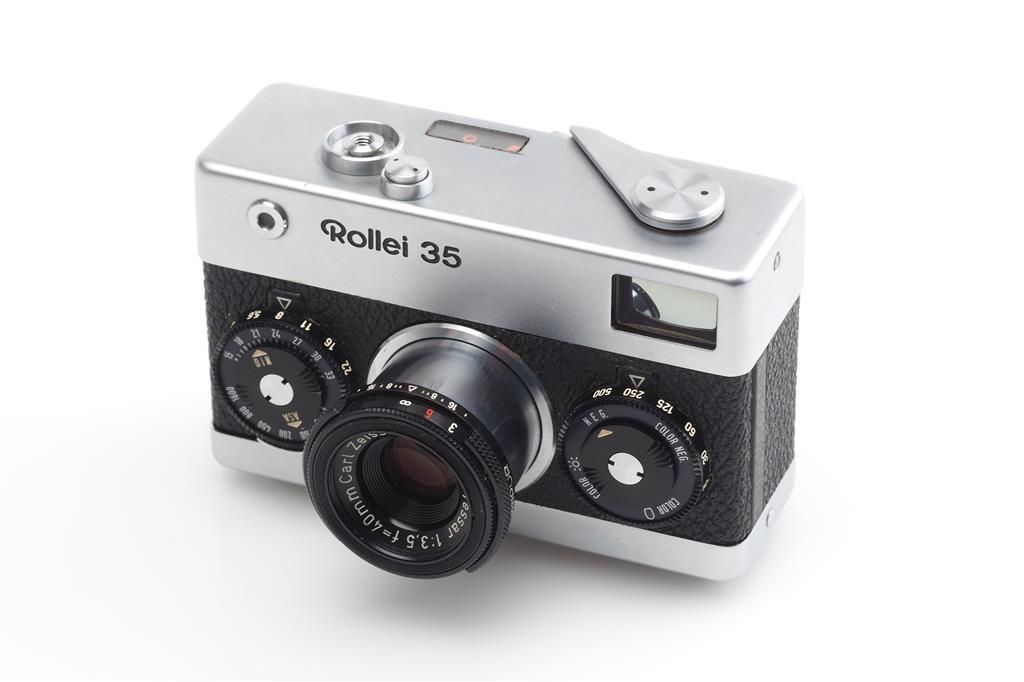Hand-held or attachable, historic or modern? Some thoughts on light meters - Jörg-Peter Rau
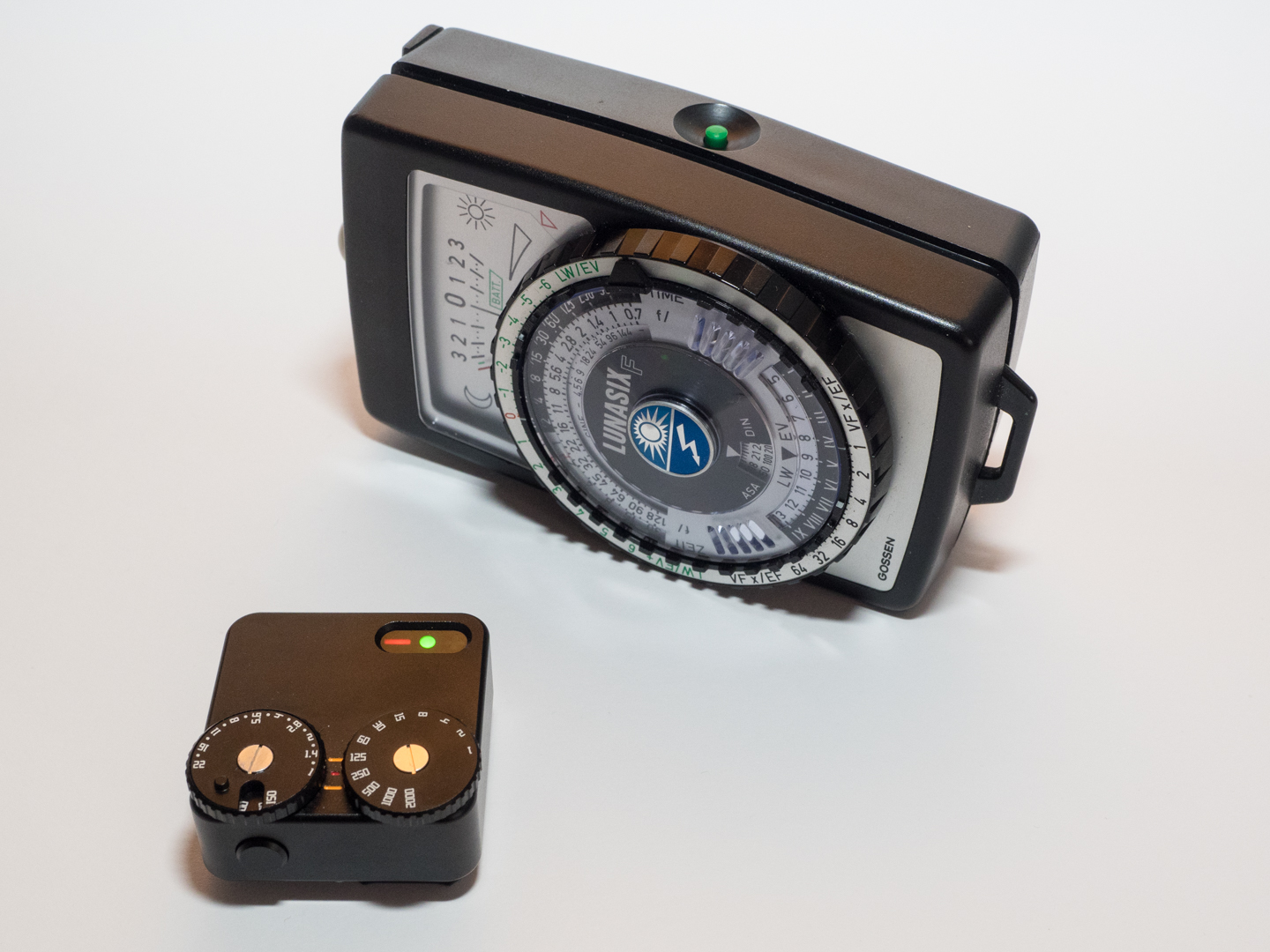
Hand-held or attachable, historic or modern? Some thoughts on light meters
There is more than one good reason to use a light meter.
This review presents two exemplary and ever-popular two members of this species: The modern TT Artisan Two Dials Exposure Meter and the vintage Gossen Lunasix F.
They could not be more different; yet they serve the same purpose.
Once they were in almost every photo bag, and every photographer used to know how to work them. Light meters (or, as they are sometimes also called, exposure meters) were standard. They told their owners what shutter speed and aperture value to choose at a given film sensitivity. Form the 1960s onwards, more and more cameras offered built-in, mainly even though-the-lens, metering. But there must be a reason why these presumably old-fashioned devices are still around. Let’s start to explore the territory of light meters.
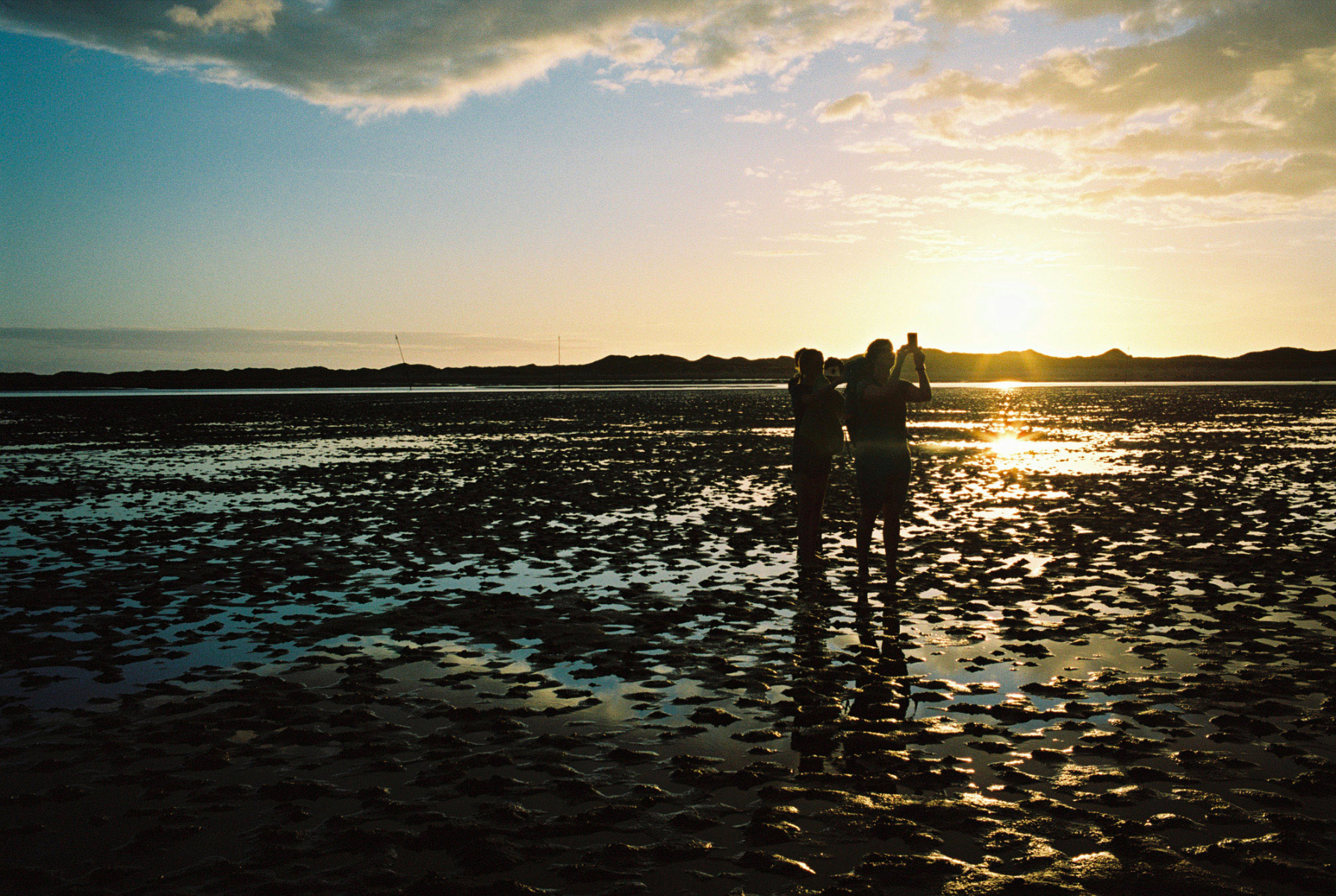
The magic of light: If your camera has no built-in light meter (such as the M3 with which this photo was taken), an external light meter is helpful or even necessary. Shot on Kodak Portra 160.
Introduction: Why using an external light meter?
There are still working cameras around that simply have no light meter. Think of all these wonderful Leica rangefinder models before the M5 and M6. Think of the iconic Hasselblad 500 C. Think of vintage medium format cameras. Or just imagine that Leica builds a film camera to this day without a built-in light meter. The model M-A is in such heavy demand that some prospective buyers (and, let’s hope, users) have to wait for months to get one.
Another reason to buy an external light meter is that your camera has built-in metering but the metering is no longer working. This can be due to electric or mechanical problems, battery issues (the sad story with the PX625 mercury 1.35 Volt batteries which are no longer available) or for a large number of other causes.
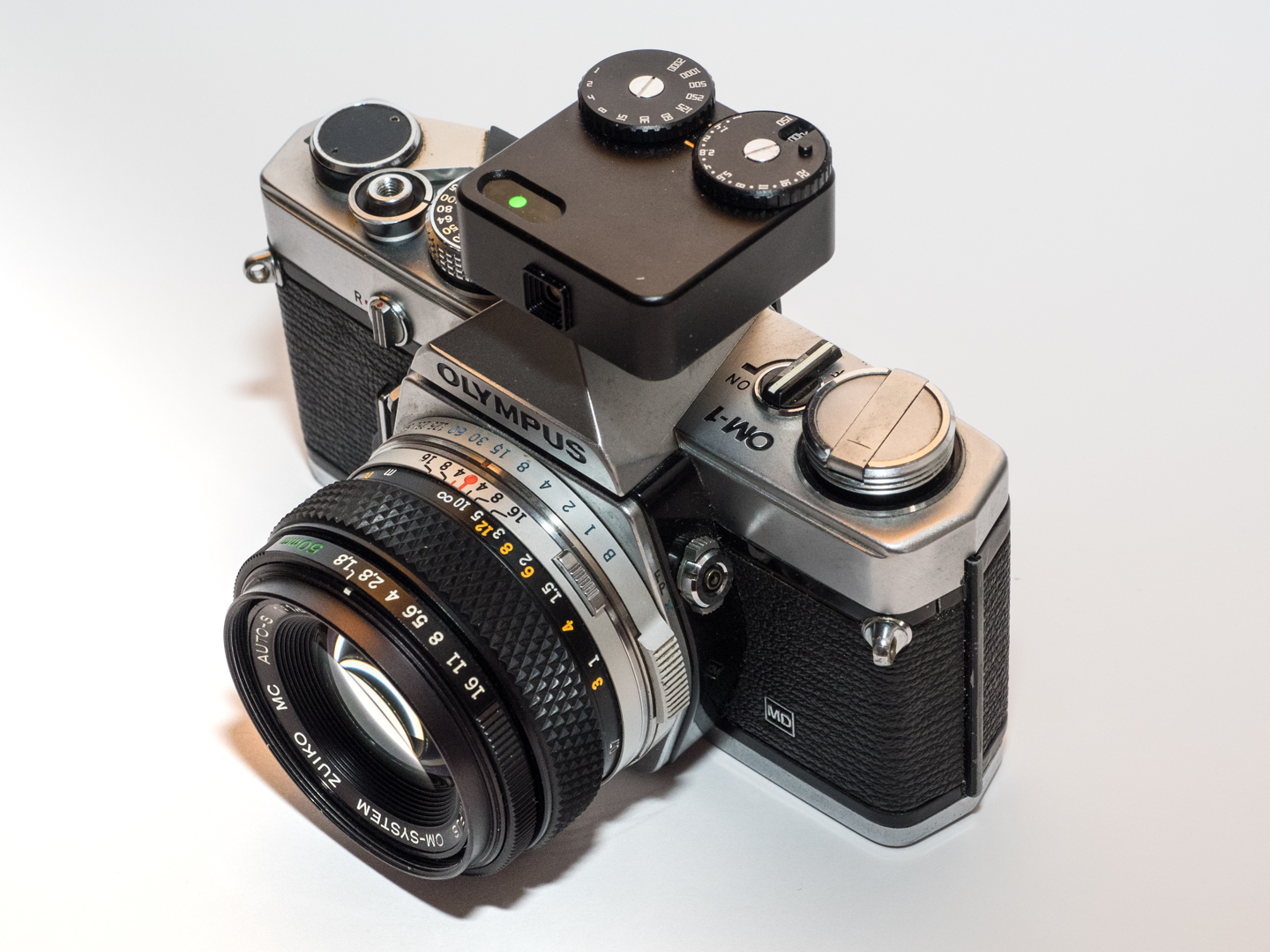
The (historic) Olympus OM-1 is one of the many cameras from the 70s which need the discontinued 1.35 Volt mercury batteries. An attachable light meter such as this TT Artisan can solve the problem, however not with TTL metering of course.
Finally, an external light meter is helpful for learning the principles of the exposure triangle. In times when digital cameras are automatically setting not only shutter speed and aperture, but also ISO values in an enormous bandwidth, users will soon lose or never develop a feeling for exposure. A simple device that does nothing apart from measuring light can be a good teacher.
On what should I base my decision?
Whoever wants to go for a light meter should ask themselves a few questions: Do you ever use flash in the setting for which you buy your meter? Do you just need support for casual photography or do you really want to learn the art of perfect exposure? Do you want to just try working with a light meter or are you sure it will become a constant part of your kit? And: How much do you want to spend; can you imagine buying second hand?
If you are new to light meters and if you read this because your vintage camera offers no light metering, if you are a casual photographer and if you just want to give it a try, a small and affordable camera-attachable light meter might be right for you. I selected an attractive model in the review section of this article. If you are an experienced photographer who probably strives for deeper understanding of exposure, a good hand-held meter is a reasonable solution. I chose a model for you that is affordable on the second-hand market.
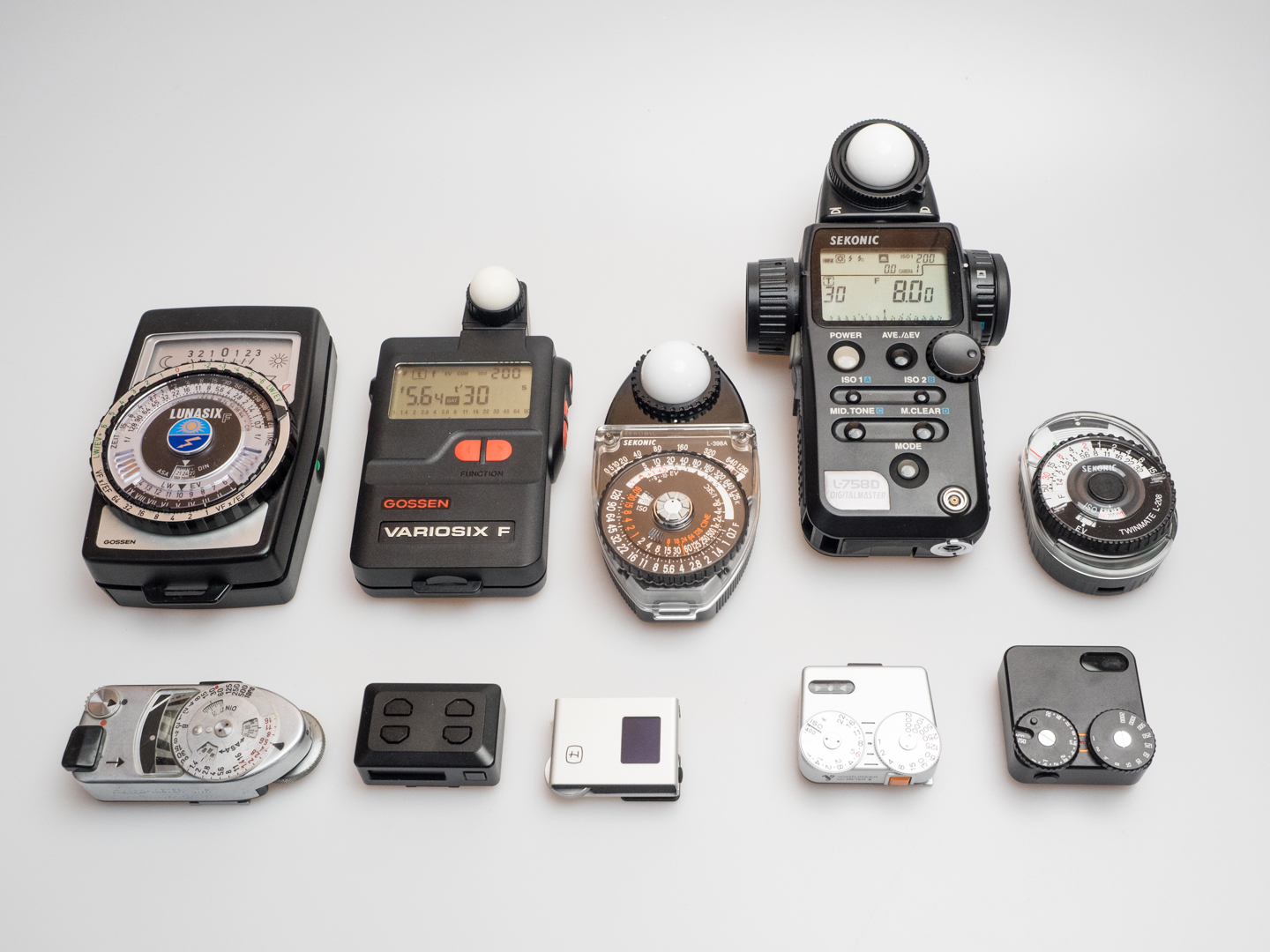
Dozens or even hundreds of different light meters were manufactured. This is just a small selection of hand-held and attachable devices from six decades.
Finally, think about weight and size. It’s the same as with choosing a camera: The best light meter is no help if you left it at home for reasons of ballast avoiding when you went hiking, biking or sightseeing.
Choosing a light meter: What else should I consider?
There is a huge second-hand market for used light meters. While in past decades they often received little attention and were considered obsolete, the pendulum now seems to be swinging almost in the other direction. But the supposed collector's item it not necessarily one. And just because it comes from someone's beloved grandpa doesn't automatically mean it has sentimental value also for you.
Moreover, it is not always easy to check in situ for correct function if you are buying a light meter. For a start, it would be good to know: Are the battery contacts clean? Can the needle move and do LEDs or LCD show anything? Does the device need exotic batteries, or does it get by with standard products?
Of course, it is always possible to find a bargain at the flea market or on the internet. But once you have reached a certain region price-wise, I would rather advise buying from a reputable dealer or a private person in the vicinity. In this case, you can check the function right away or, in the case of a dealer, organise a return.
* * *
And what about all these light meter apps for your smartphone?
Those who cannot or do not want to buy a light meter can also use an app for their smartphone. Personally, I think it doesn't quite fit in with the magic of analogue photography, but the app alternative has two huge advantages: it costs nothing or almost nothing, and you have your mobile phone with you almost all the time. Since this article deals with stand-alone light meters, I won't go into apps any further. After the following two reviews, there are some recommended links for those who want to read more.
* * *
Hand-held light meters, represented by the Gossen Lunasix F
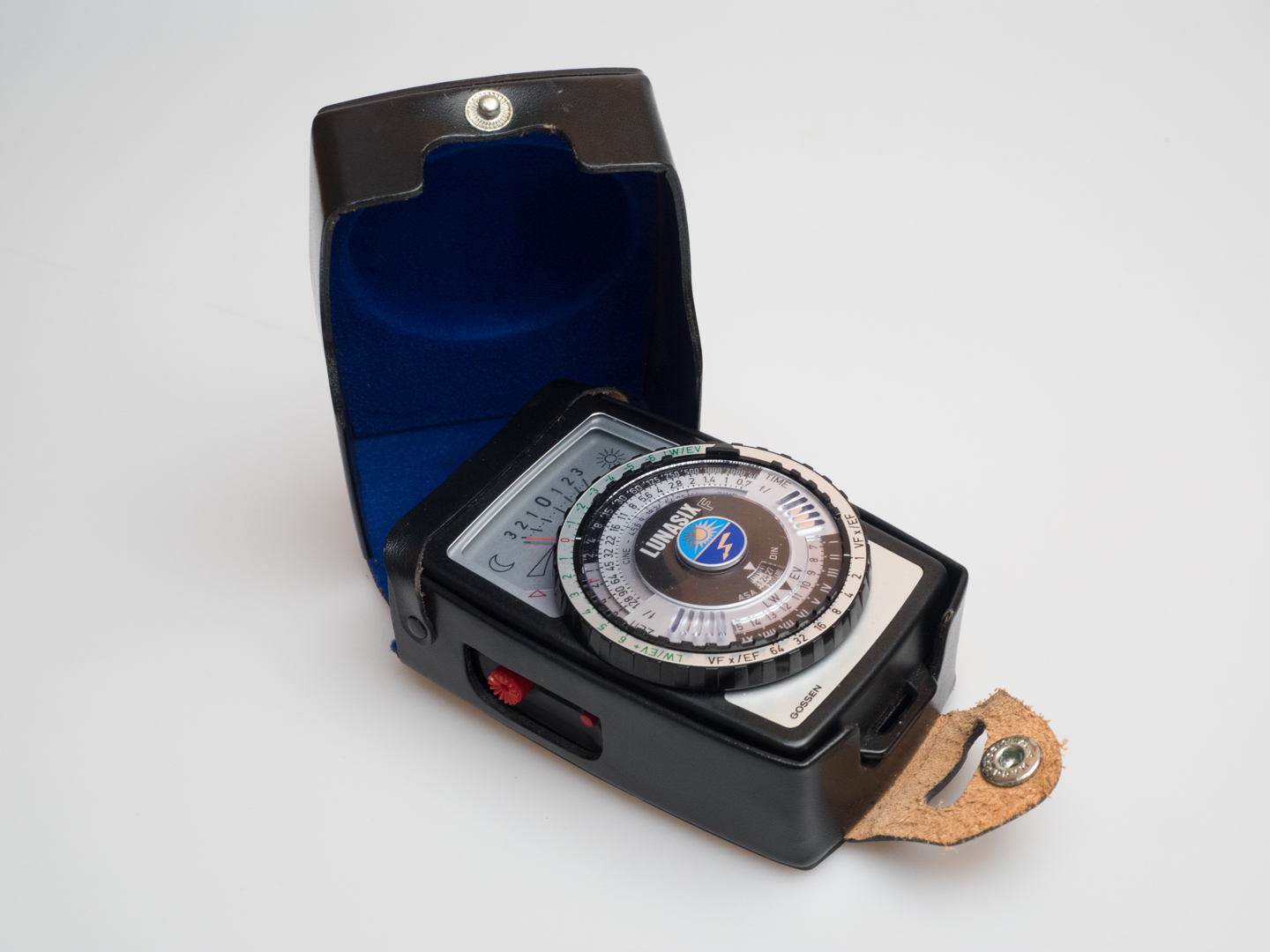
The Gossen Lunasix F is a true classic among hand-held light meters. And they were built to last back then.
The Lunasix F was the last light meter with an analogue needle readout that Gossen produced (some history and technical data are to be found here). All newer models have digital displays. It’s a fully featured device for ambient and flash metering. By sliding a diffusor cap, you can switch from reflected light metering (you measure towards your subject) to incident light metering (you measure from your subject into your source of light).
Many people say the Lunasix F was the pinnacle of European-made analogue light meters. In fact, Gossen built an excellent, long-lasting and sustainable device. It can be repaired and calibrated, it uses standard 9 Volt batteries and is extremely reliable. Gossen even provide a PDF manual on their site. The appreciation for customers that is evident from this cannot be praised enough!
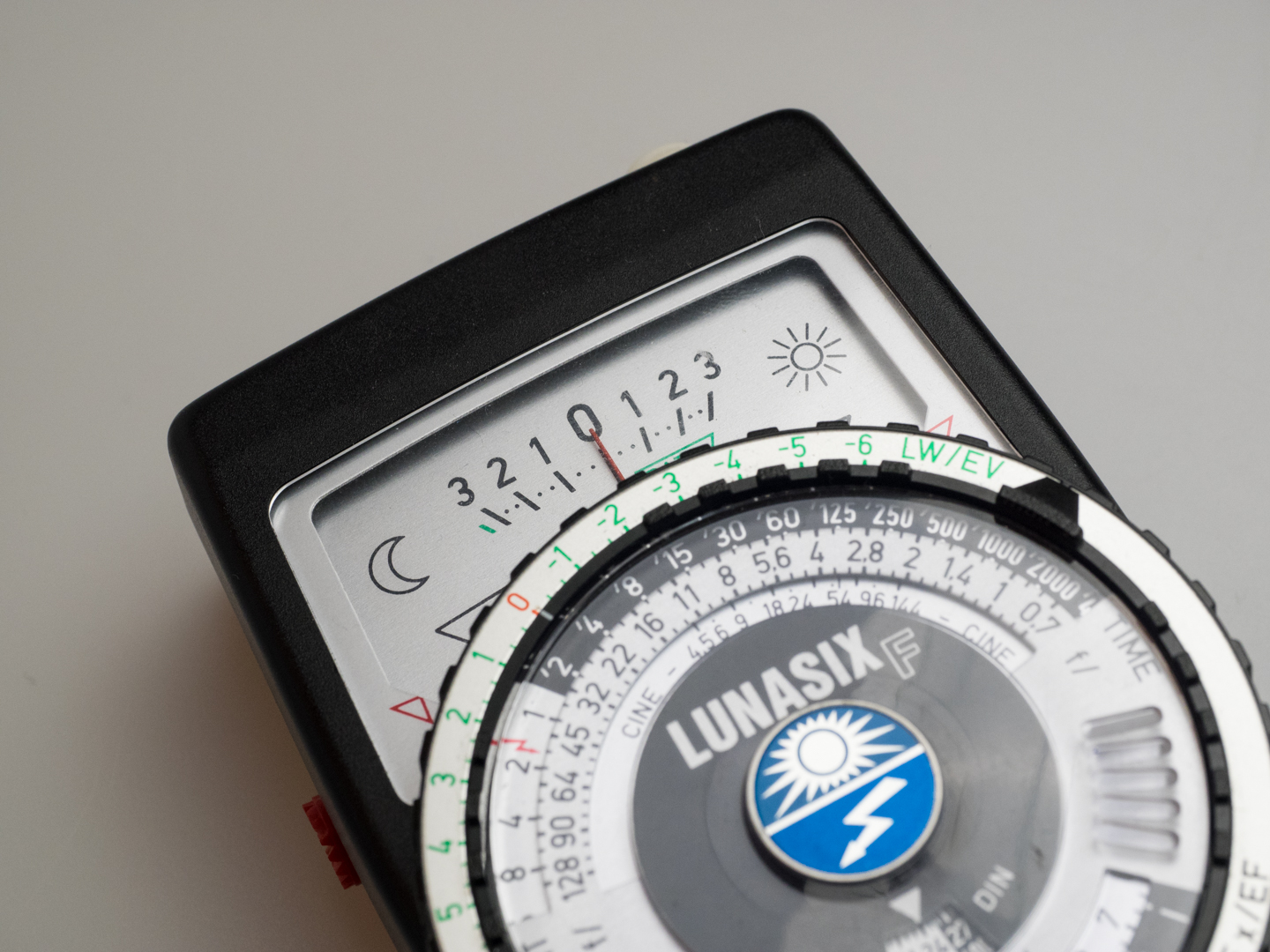
The Lunasix F is a zero or null pointer measurement meter, as camera-wiki aptly puts it. This makes it technologically advanced and very precise.
What I like most on the Lunasix F is its principle of zero-point-measurement. Almost all analogue light meters have a pointer that deflects more or less strongly depending on the light intensity. It will be more to the left or right of the scale, more in the middle or at an extreme edge. The user then aligns a second pointer with it using a disc. This often leads to inaccuracies at the edges. The Lunasix F is always set to zero by rotating the big disc (or, for example, to +1 for an aperture overexposure). This is a masterful technical solution!
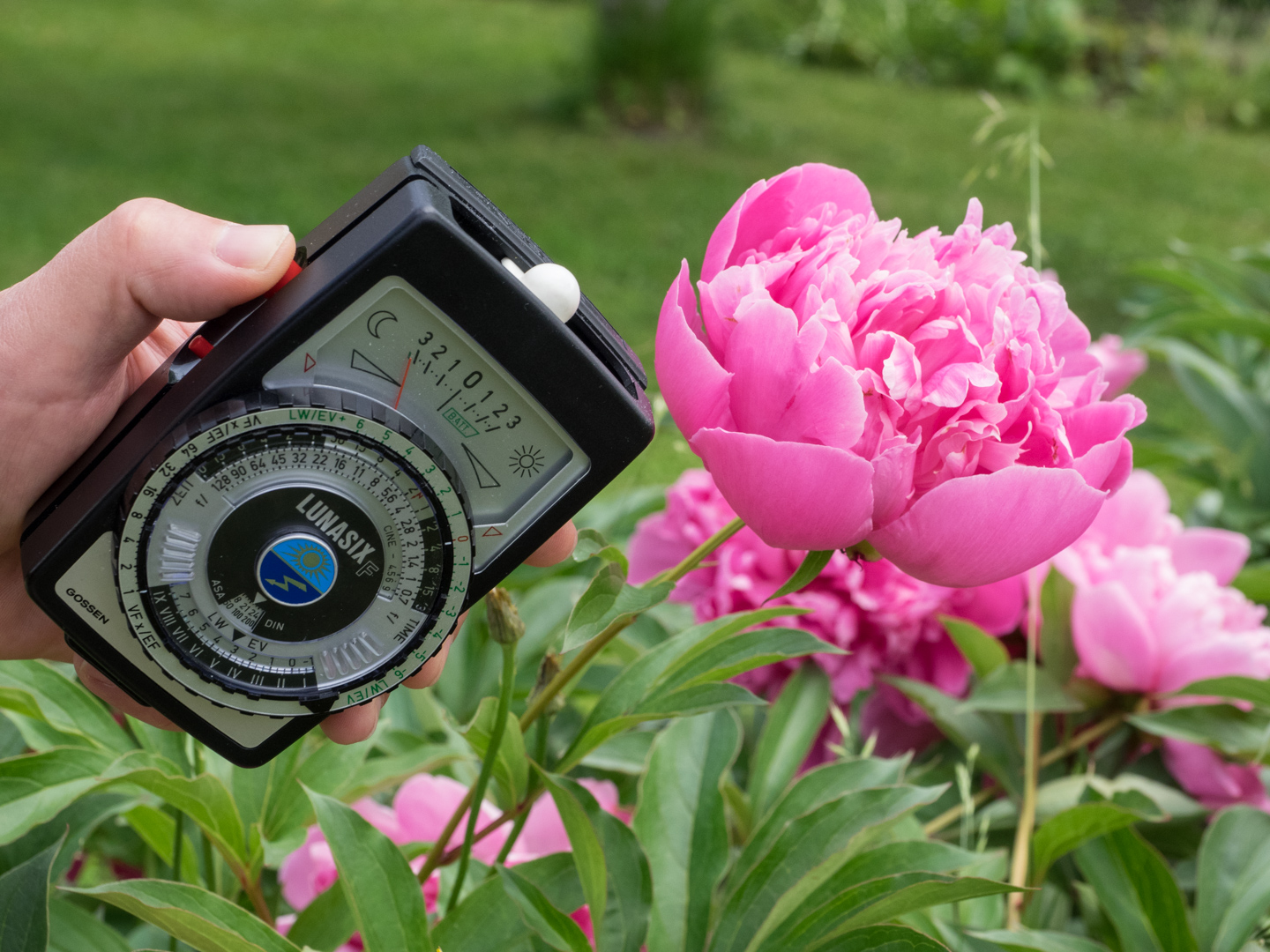
Incident light metering: The diffusor is over the measuring element, the light meter pointed towards the source of light (and then activated with the red button)
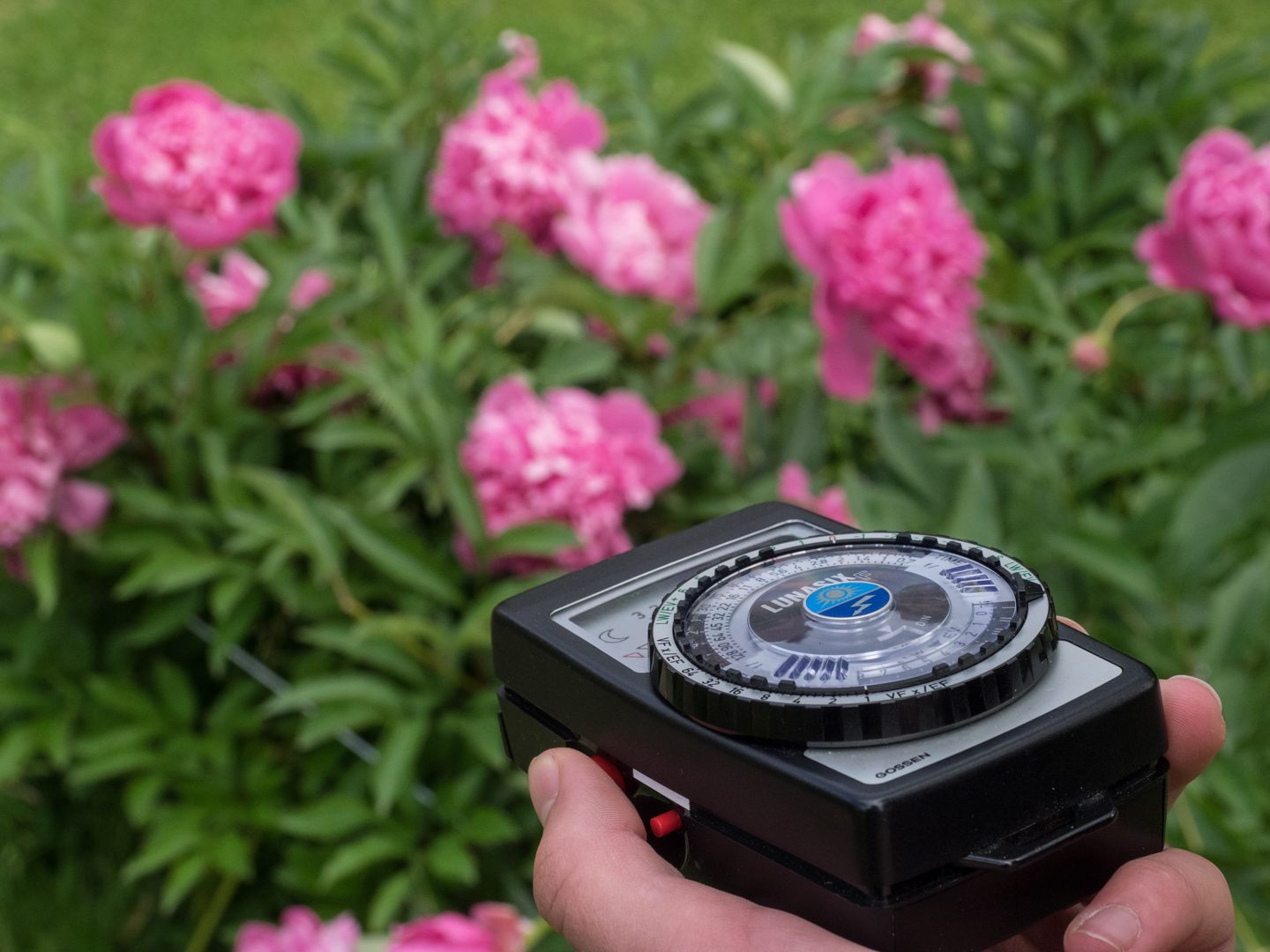
Reflected light metering: The light meter is pointed towards the subject. The diffusor is pushed aside. The device measures the brightness of the subject based on 18% reflection.
The Lunasix F I bought from Jo Geier was spot-on accurate in my (non-scientific) tests both in the field and under controlled studio conditions. Of course, there are many other analogue and digital light meters both from Gossen and from other manufacturers such as Sekonic, Polaris or Weston. But if you’re in for a real classic, the Lunasix F will tick almost all boxes.
The Gossen Lunasix F has been discontinued many years ago. Check second-hand offers or ask your dealer to reserve one for you if he gets one in. Expect an investment of up to 150 euros, depending on the condition.
* * *
Attachable light meters, represented by the TT Artisan Two Dials Exposure Meter
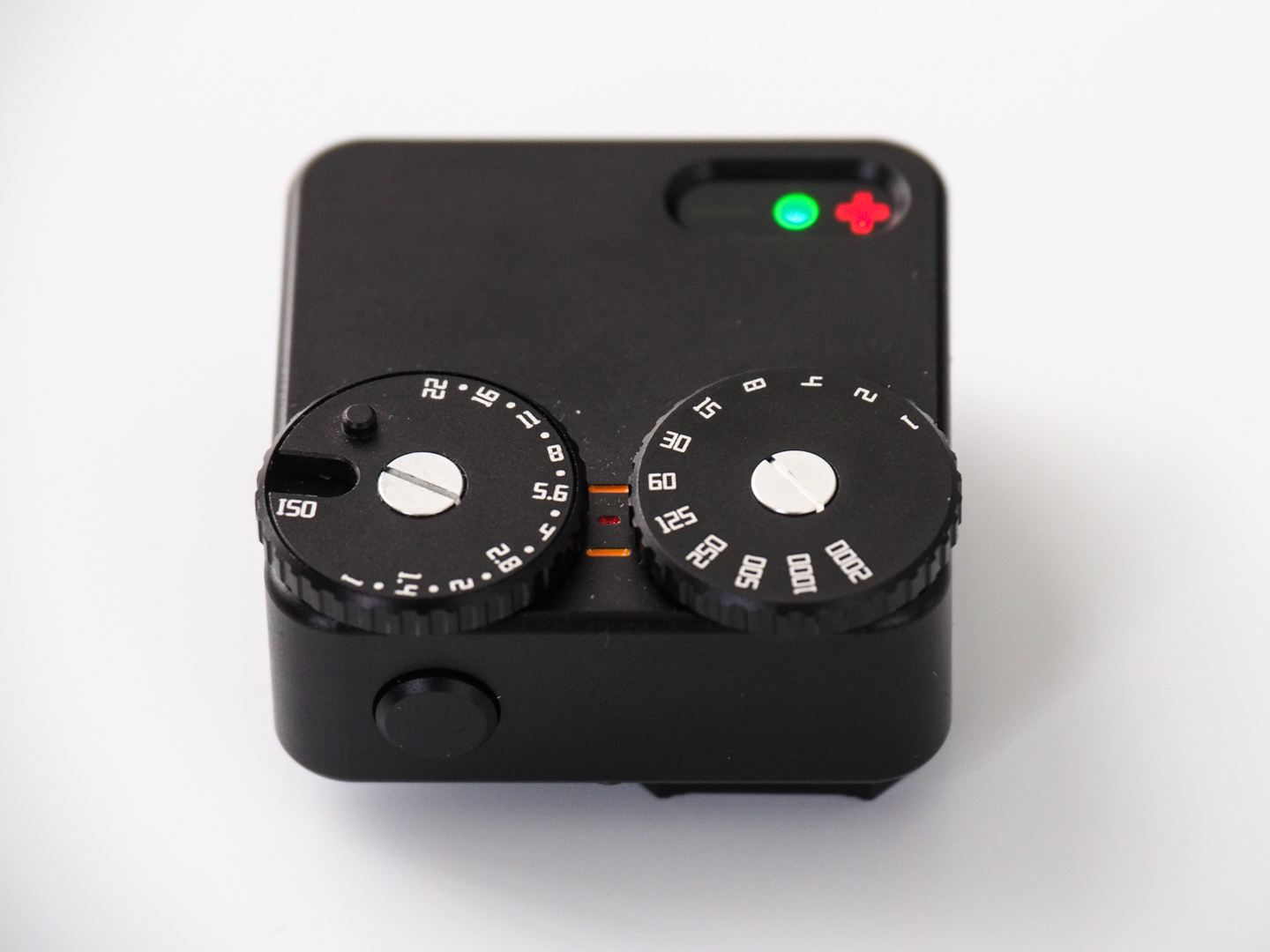
The TTArtisan Two Dials Exposure Meter is a small device that attaches to your camera’s accessory shoe. It’s also available in silver and black paint.
Attachable light meters have a long-standing history. The first models for the Leica rangefinder camera were launched in the 1950s. Later models even featured mechanical coupling with the camera. Then nothing happened for decades. Until Voigtländer had the courage to launch the first and a few years later the second version of the clip-on VC Meter. This was primarily intended for meter-less Leica and other rangefinder cameras, and the market reacted positively.
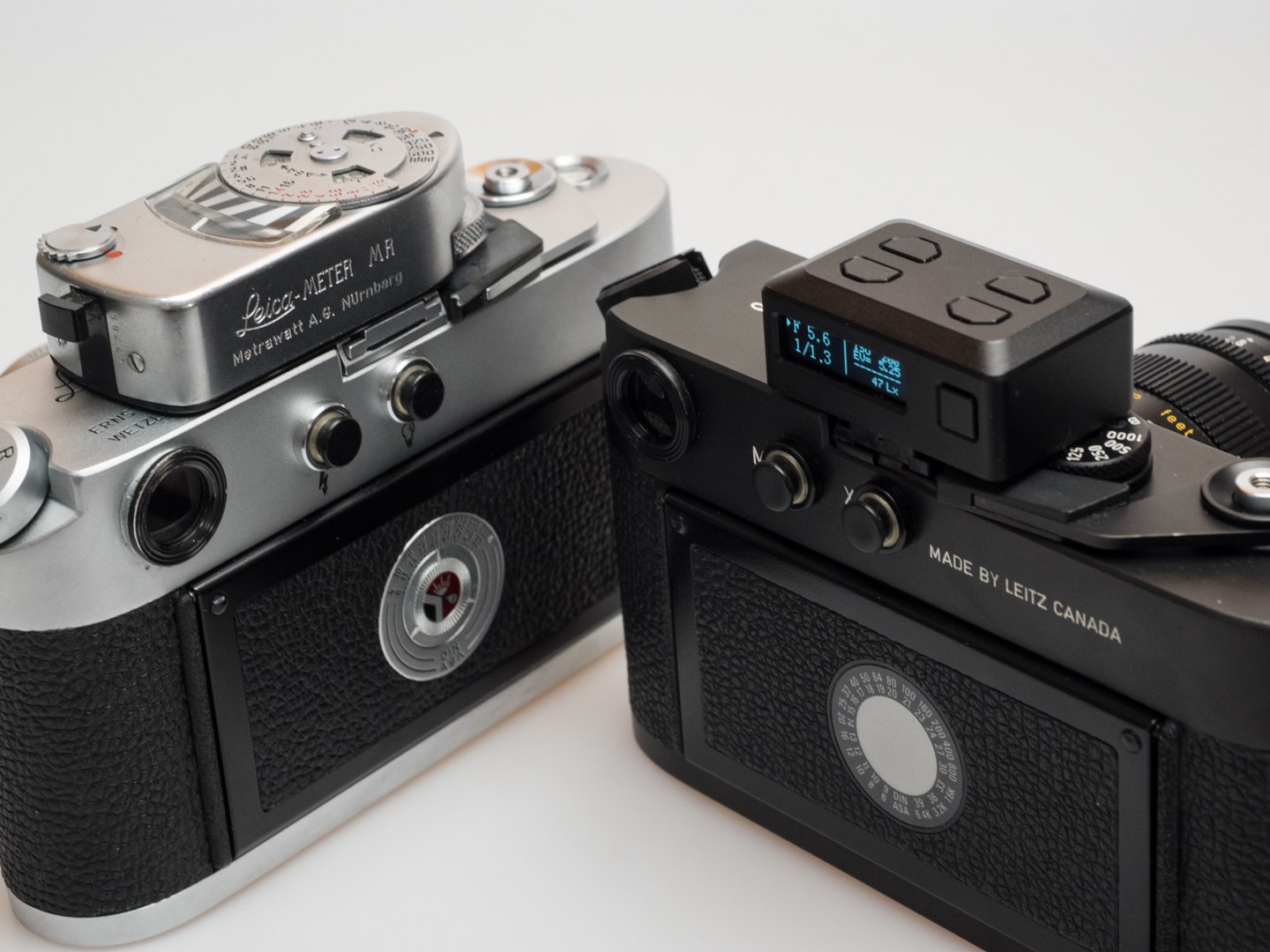
Attachable light meters for rangefinder cameras have a long history, from the Leicameter which was launched in the 1950s to modern OLED light meters.
Subsequently, many other attachable light meters came onto the market, all of which are plugged onto the camera's hot shoe. Some are very modern with OLED display and menu navigation; others are rather minimalist. Many of these products were conceived through crowdfunding campaigns, which says a lot about the market for such accessories.
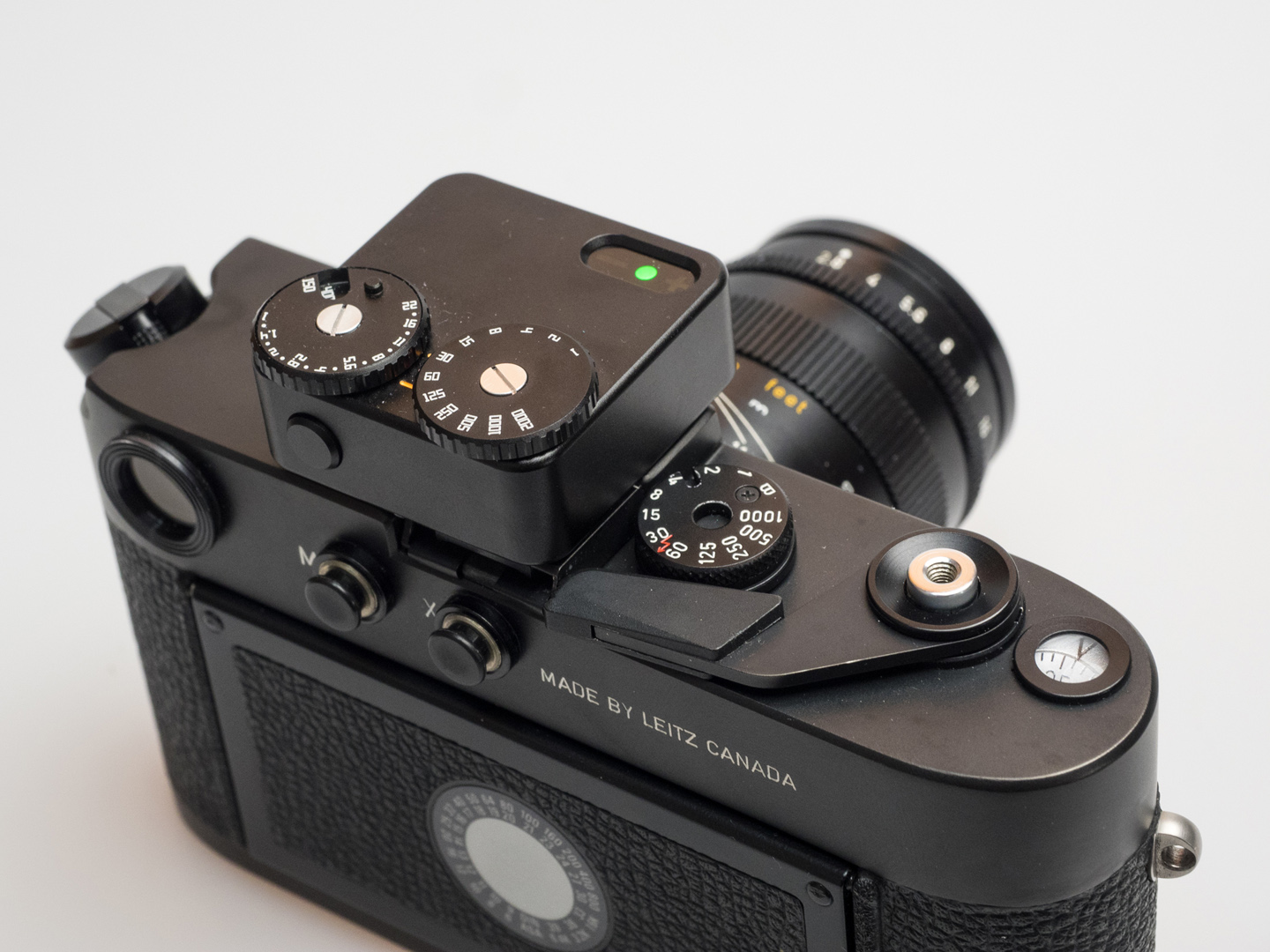
The TTArtisan protrudes a bit over the Leica M4 body but that’s a purely cosmetic issue.
The TT Artisan Two Dials Exposure Meter offers exactly what its name suggests: two dials for exposure time and aperture, one of which is also used for the ISO setting (which unfortunately readjusts itself easily). The user then turns both wheels so that the green LED in the middle lights up. A red minus means under- and a red plus means overexposure. The respective direction of rotation is intuitive. The whole device, which is made in China, is, well, very similar to the VC Meter, which is four times more expensive. However, the workmanship seems high quality and the price is reasonable.
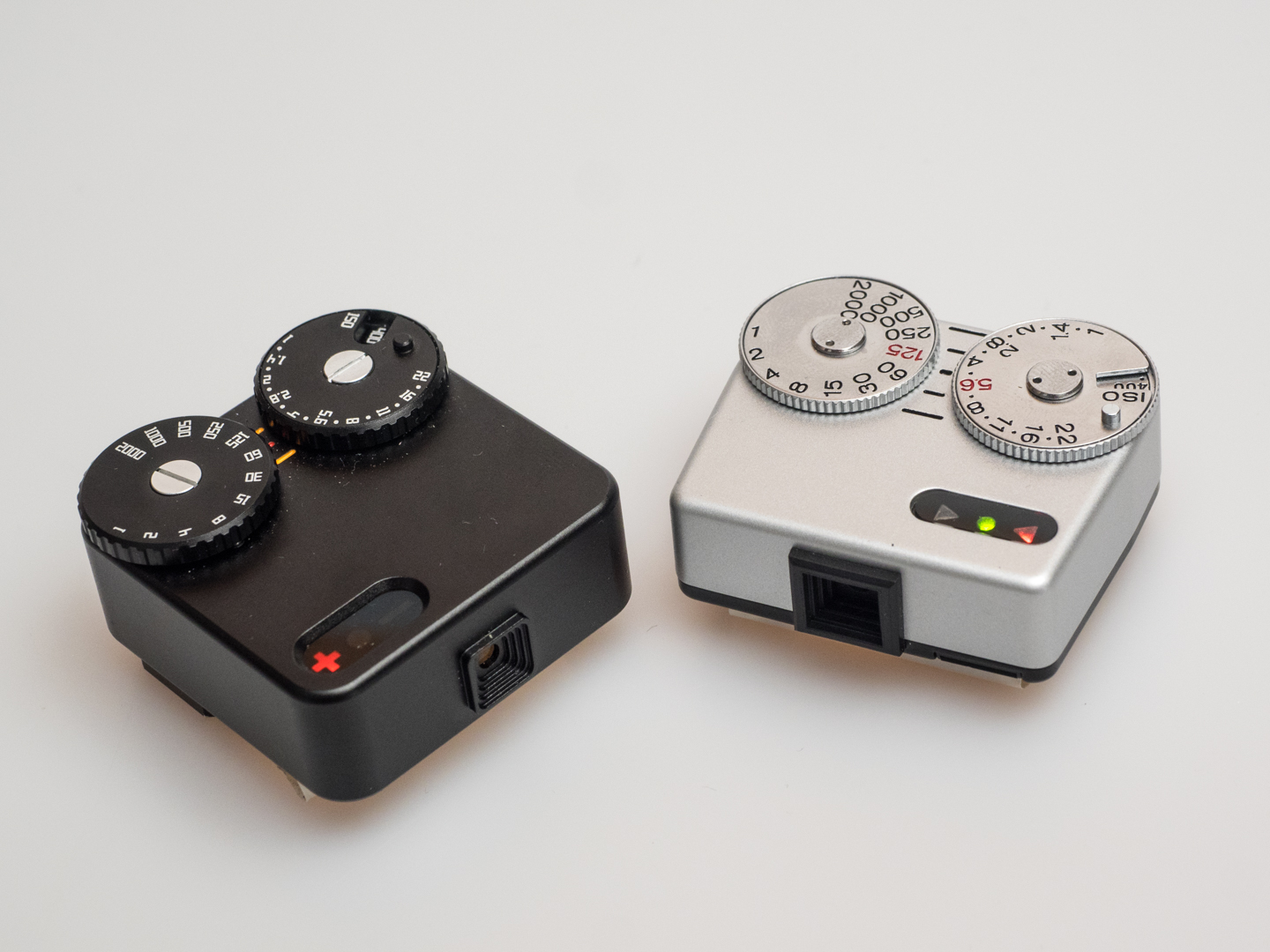
Spot the difference: Voigtländer launched the VC Meter II (right) some years ago. TT Artisan followed with a very similar design.
I found good measuring accuracy and straightforward handling. Of course, you first need to understand how the metering cell works and roughly what angle it covers (on the Leica M, the frame lines for 90 millimetre lenses give a good orientation). The small TT Artisan light meter looks well made, and it is so small and light that it can always stay on the camera.
The TTArtisan Two Dials Exposure Meter is available new from various sources including Jo Geier Mint&Rare. As of writing this (May 2022) it costs about 70 euros plus a standard CR 2032 battery (a shame that they don’t supply it right away).
* * *
Find more information in three in-depth articles
I have dealt with the subject of light meters very comprehensively in a series of three articles. They were published in English and in German on two highly recommendable (and I am not referring to my own articles) photoblogs. These articles go into much more depth:
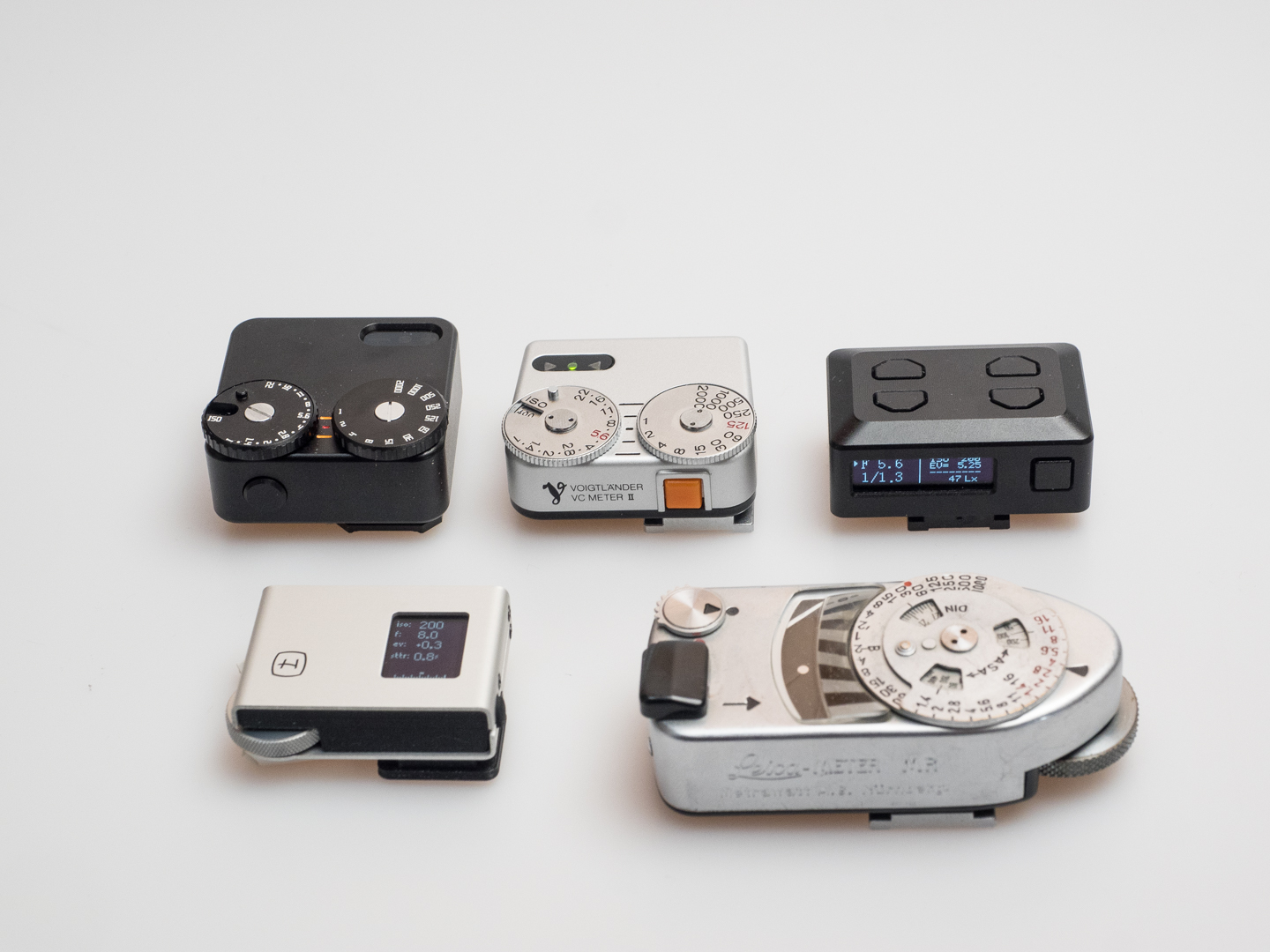
In an extensive article, I reviewed these five attachable light meters: TT Artisan Two Dials Exposure Meter, HEDECO Lime One, Voigtländer VC Meter II, Leicameter MR, KEKS EM-01 (left to right).
The first article covers five attachable light meters in comparison, from the good old Leicameter to the miniature OLED high-tech part from HEDECO: Read it here on Macfilos in English or here on Messsucherwelt in German.
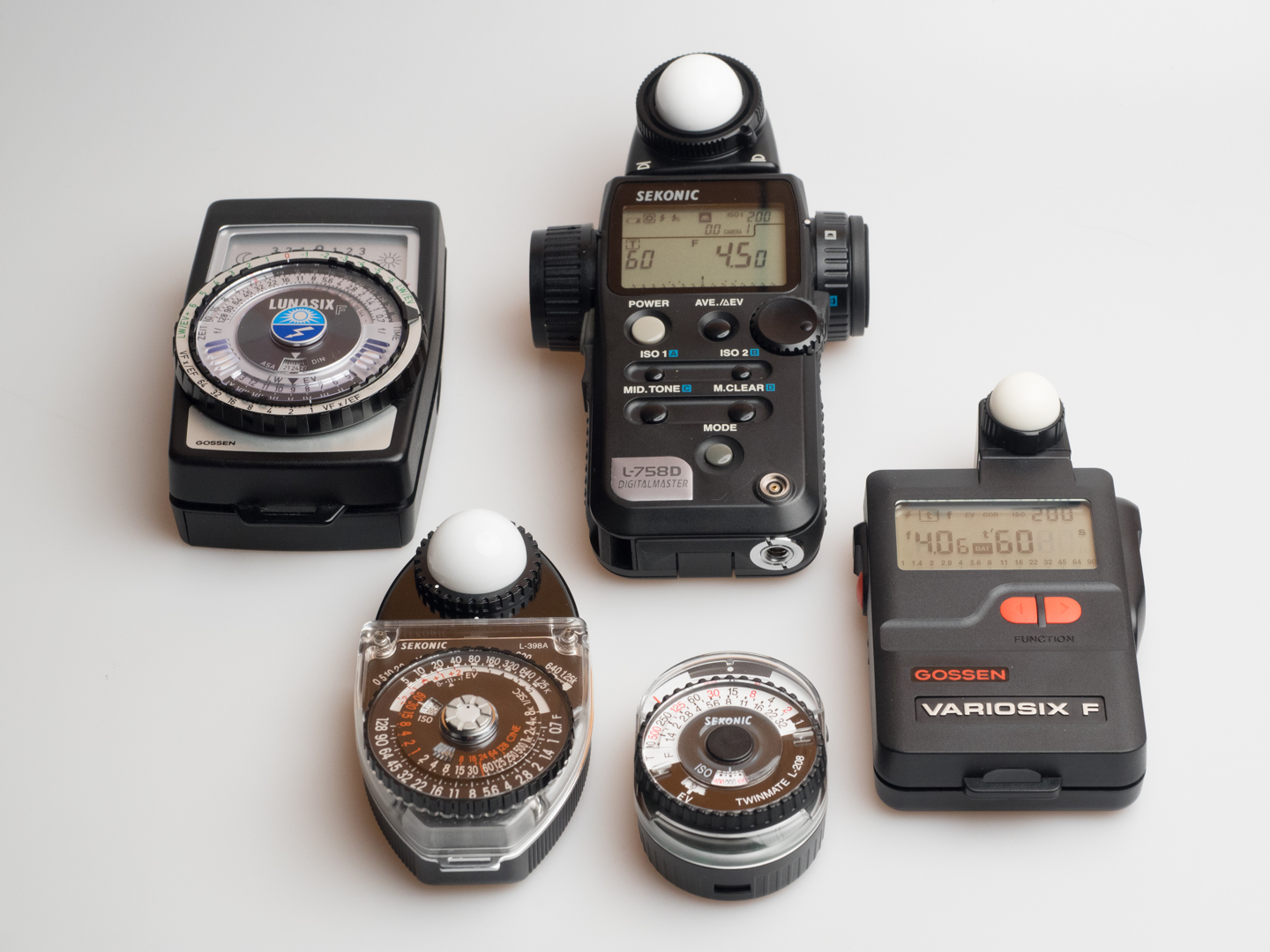
For my review of hand-held meters, I worked with these five ones: Gossen Lunasix F, Sekonic L-398, Sekonic L-758D, Sekonic L-208, Gossen Variosix F (left to right).
Five hand-held light meters from five decades by Sekonic and Gossen are the topic of the second story, they from the vintage model to the microprocessor-controlled all-rounder: Read the article in English on Macfilos here and here in German on Messsucherwelt.
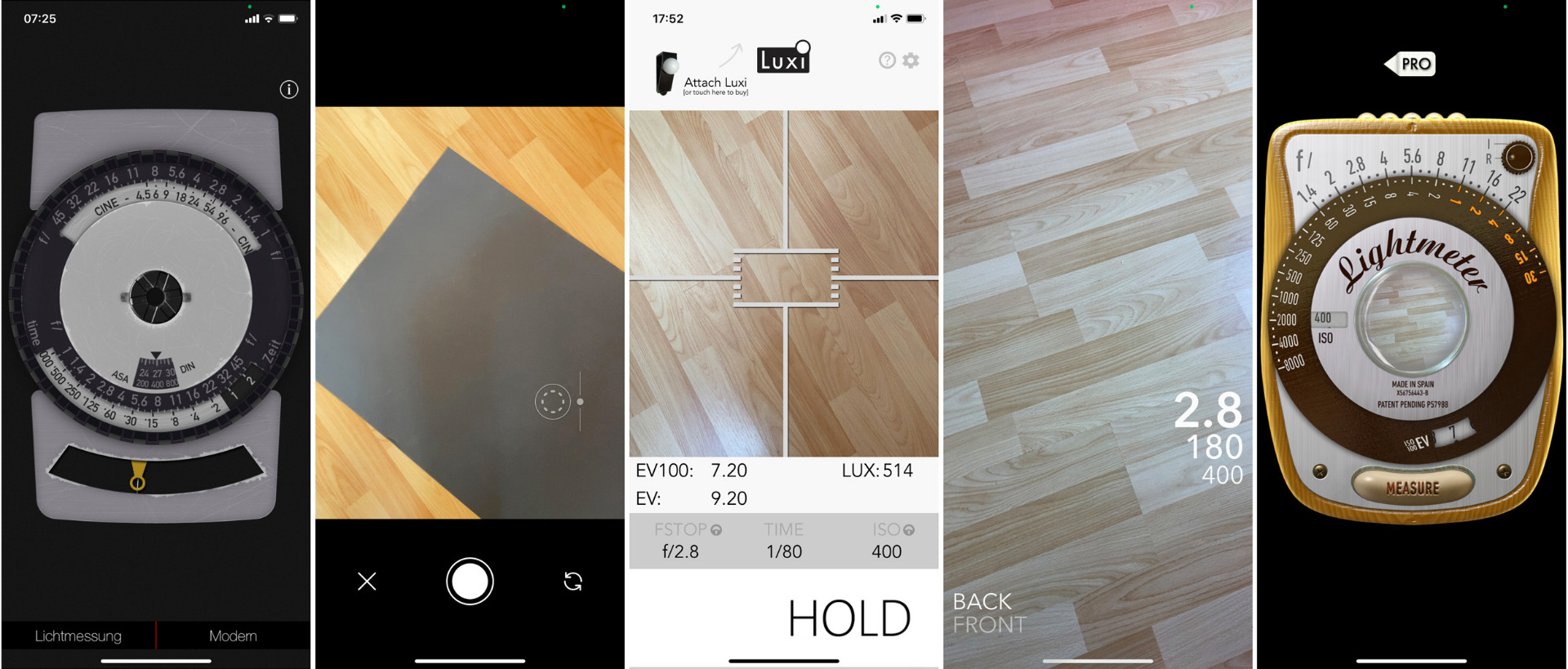
Five apps for light metering are the topic of my third article: Photometer, Lghtmtr, Luxi, Lightmate and MyLightmeterPro (from left to right).
Finally, there is an in-depth story covering five light meter apps for iOS, from the purist minimal programme to the lavishly equipped all-round app, with a surprising suggestion for creating your own no-cost attachable diffusor element. These articles are also available here on the Macfilos website and here in German on Messsucherwelt.
* * *
Conclusion and outlook
We have seen that light meters have a solid raison d’être or call it a rationale to this day – by far not only in cases in which your camera just as no built-in light metering.
For daylight work with your vintage camera, on conventional film material, an attachable light meter will perfectly do the job for you. If, however, you want to try the superior method of incident light metering or if you aim for flash control, a hand-held meter will be the tool of your choice. The better smartphone light metering apps are more than a stopgap solution for sure, and I encourage you to try them out – and if only as a backup.
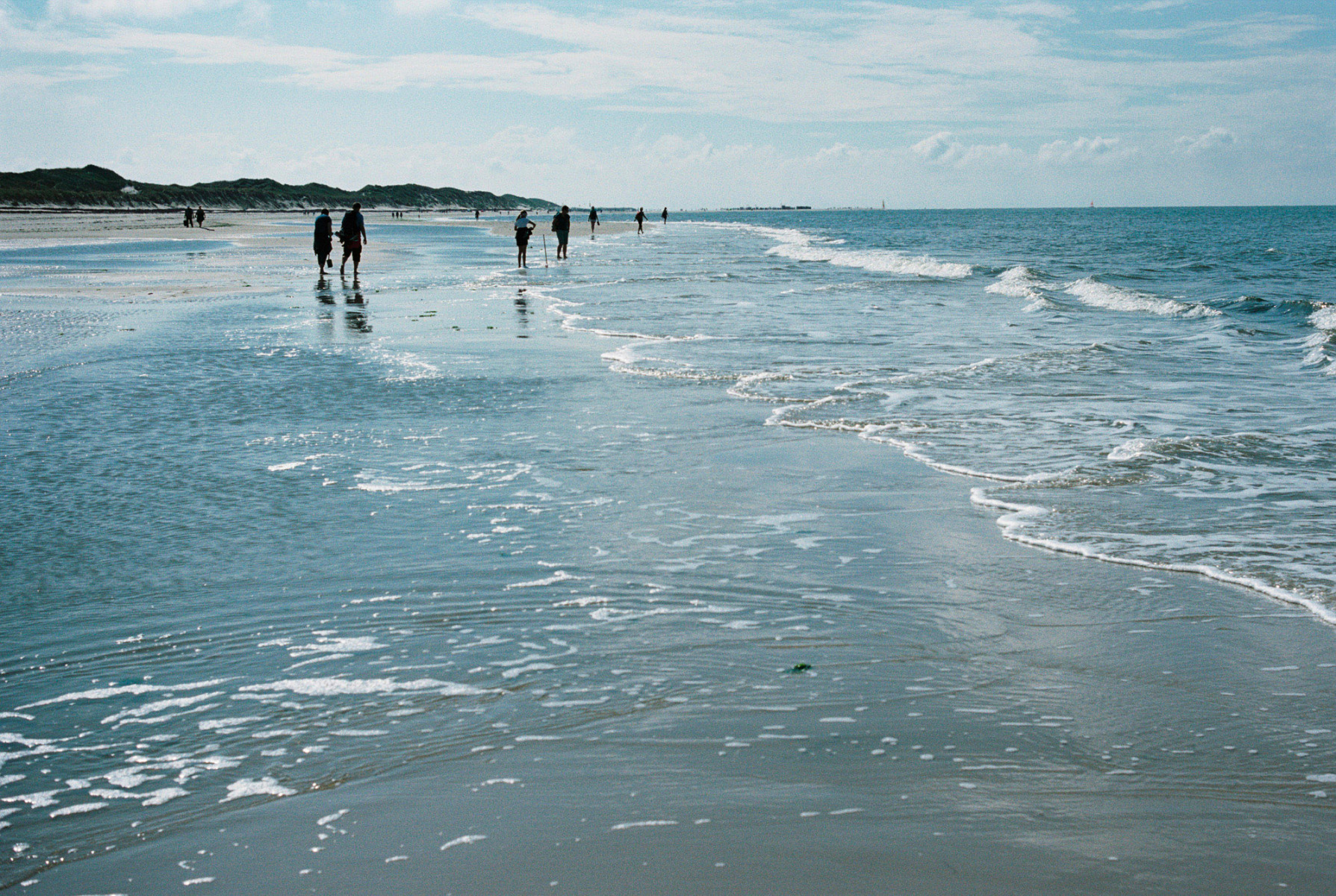
With some experience, you could guess your shutter speed and aperture value combination in such a situation if your camera does not provide metering. But with an external light meter, you’re on the safe side.
Hand-held as well as attachable light meters are available both new and used in a huge variety. If you do not want to test your luck on a flea market, I recommend buying from a reputed dealer. You will get advice there, also concerning battery and other issues. I can recommend both the TT Artisan Twi Dials Exposure Meter and Lunasix F and also Jo Geier Mint&Rare where I got these two nice devices from.
Finally, keep in mind that so-called perfect exposure pretty much lies in the eyes of the beholder. There are different tastes and technical requirements, and the outcome of your analogue photography might more depend on age, storage and handling of your film as well as on the accuracy of your camera’s shutter speeds. So stay relaxed, don’t forget creativity over the stive for technical perfection. And, as the German-speaking photographers say, “Gut Licht”!
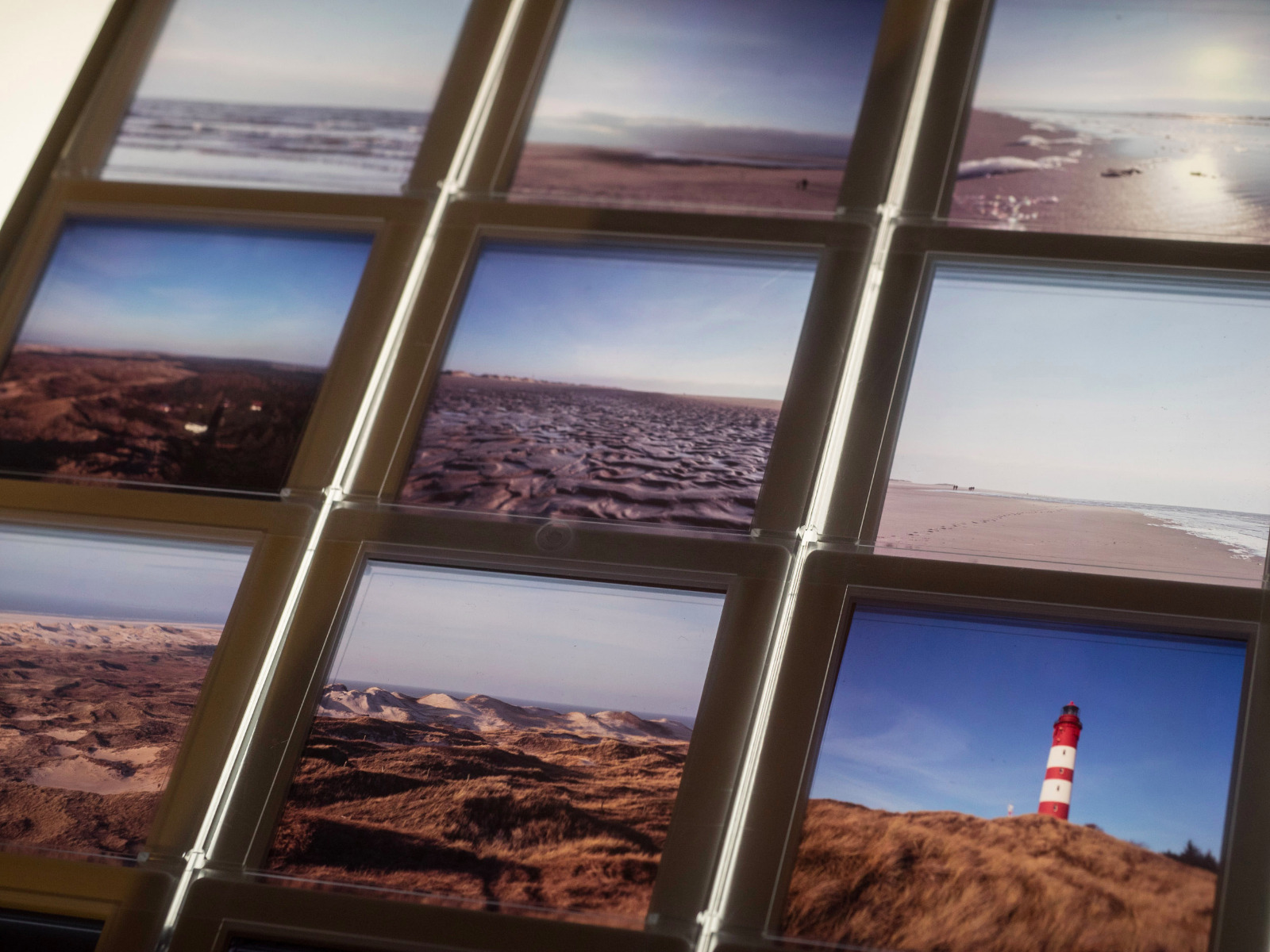
The light meter gets indispensable when you are working your Hasselblad 500C: Medium format slide film is demanding and expensive.
Copyright text and images Jörg-Peter Rau

